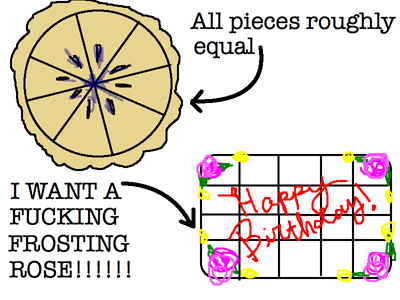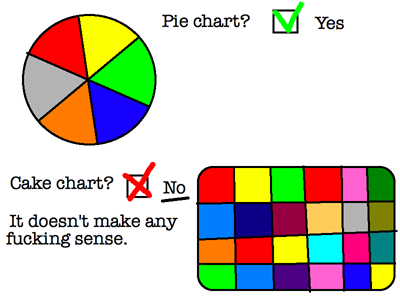Cake Versus Pie: A Scientific Approach
Allie Brosh, who appears to be some sort of genius, brings us definitive arguments in the cake versus pie debate. Best to read the entire treatise, but here are a few highlights on how clearly pie defeats cake:
Ability of enjoyment to be sustained over time
Couldn’t agree more: it always seems like a good idea on the first bite, and then I catch myself. What am I doing? I hate cake. Another graphic:
Unequal frosting distribution is a problem
I grew up requesting pie for my birthday (strawberry rhubarb, thank you very much) instead of cake. This resonates. More importantly (for this site), Brosh cites the enormous impact of pie vs. cake for information design and visualization:
Pie is more scientifically versatile:
Again, you really should read the full post, or the rest of her site for that matter. Her piece on the Alot is alone worth the price of admission.




